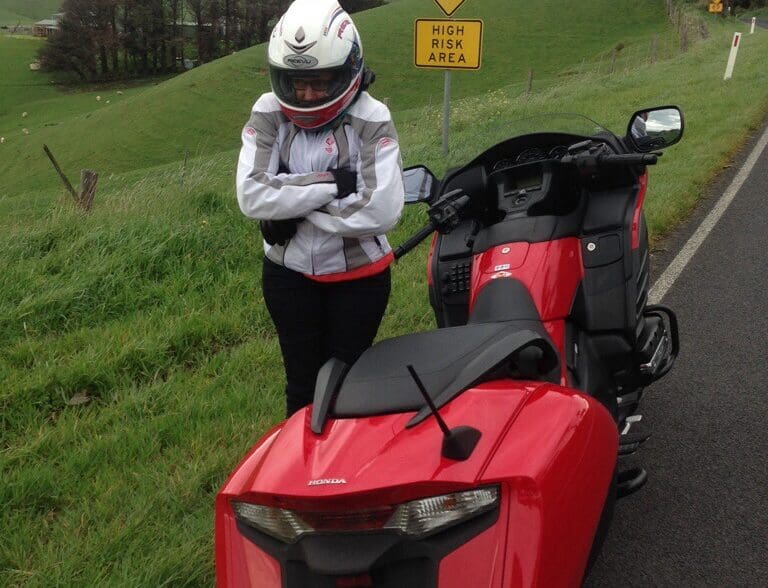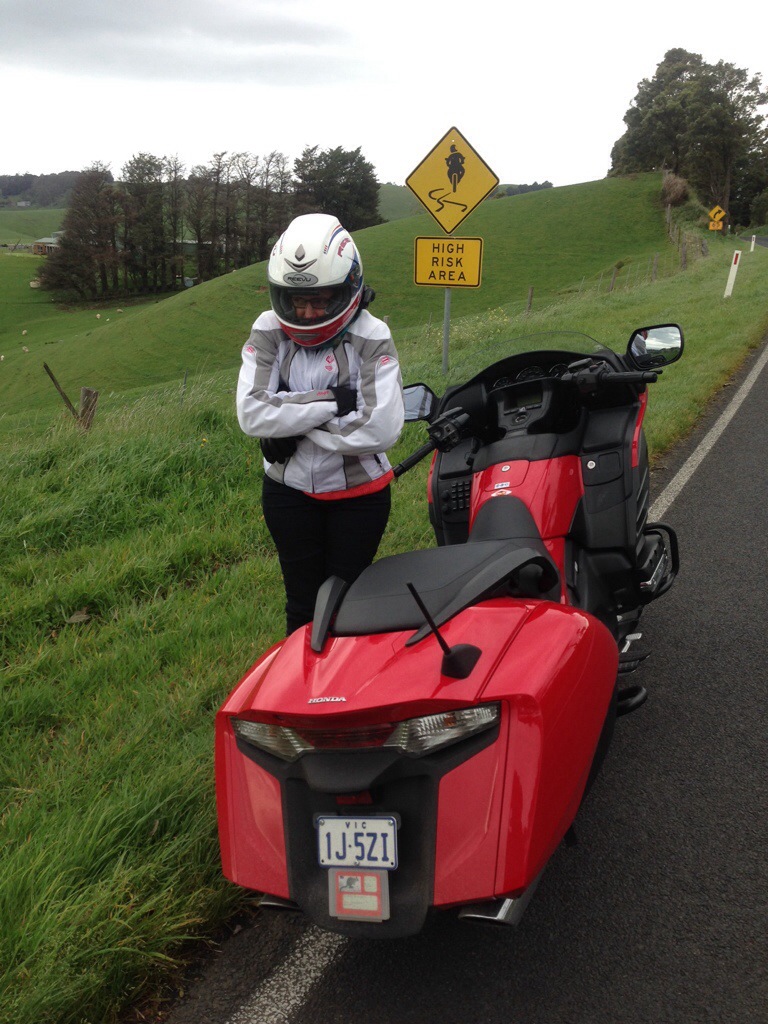I love a winding road, but I hate a windy road.
Yesterday we encountered both, plus freezing cold and pelting rain.
Just the right combination for a horrible day, right?
Wrong.
Despite a few scary moments and some inconvenience because I had stupidly packed an open-faced helmet and tinted goggles rather than a full-face with clear visor, we had a blast. Literally.
All day we rode in high winds with gusts reportedly up to 120km/h, but I think that was a bit of a weather bureau overstatement.
My wife asked me at one stage over our Bluetooth intercom if it was possible to be blown over.
I’d never heard of it happening, but I imagine a strong enough wind could knock over a bike. I’ve seen it blow over several parked scooters at Botany Bay.
However, we were on a Honda F6B Goldwing with two humans on board for a combined weight of almost half a tonne with a low and stable centre of gravity, so I couldn’t see it happening, despite the strong and gusty winds.
So I told her that it was impossible. She seemed to believe me which is good, because
the last thing you need when you are being blown about by erratic wind gusts is a scared and fidgety pillion.
Our day started on the Princes Highway heading east out of Melbourne.
The cross-winds pushed us around within our lane, so I stayed in the left wheel track of the left lane. That way we wouldn’t be blown into other lanes.
The wind was fairly consistent in strength and direction, so it wasn’t difficult to compensate. When we did cop a blast, I used throttle and counter-steering to keep us going straight, even if we were on a lean.
I figure a bike with momentum is more stable than one slowing down or stopped.
The massive Goldwing may have responded a bit like a sail when hit by side winds, but it was very stable heading directly into the wind thanks to its slippery aerodynamics.
While trees, buildings, billboards and bridges afforded some protection from the side-wind blasts, the problem is that you are leaned into the wind and when there is suddenly no more wind, you tend to turn in that direction.
The opposite happens when you come out from behind these protected areas.
Pretty soon you learn to look out for these wind barriers so you can brace yourself for the change in wind strength.
You can also take a visual cue from trees and bushes that are blowing around to tell if you are about to hit a wind gust so you can brace yourself.
Off the highway, we turned south on the C425 which wound its way over picturesque green ridges dotted with fluffy white sheep. We didn’t have much time for sightseeing, though, as my eyes were glued to the trees for visual clues of wind gusts.
The problem here is that you are frequently changing direction on the winding road, so the wind blast comes at you from different directions.
If you don’t have your wits about you, take in the cues and monitor which way you are facing, you can be caught out.
The blasts here were also stronger because the wind was whistling across the plains, then funnelling up through the valleys to breach the hilltops in a furious flurry.
You need to give yourself a buffer within your lane and take corners in the centre of your lane. You can’t use all the lane when cornering or you could be blown across the centre line into oncoming traffic or off the side of the road.
The other problem is debris.
In several places there were trees down on the side of the road.
They don’t call old gum trees widow-makers for nothing. Keep an eye on them as you ride past and be ready to hit the throttle or brake and take some evasive action.
The other thing to watch out for is fine gravel, seeds and detritus blown on to the road surface. By the time you see it, it may be too late to slow down.
Despite all these issues, my wife didn’t tell me to turn back. Not once.
Instead, we braved the conditions and patted ourselves in the back at the end of the day for having survived our little adventure.
Tips for riding with the wind



